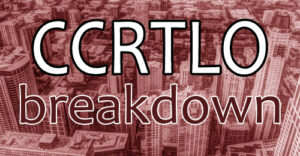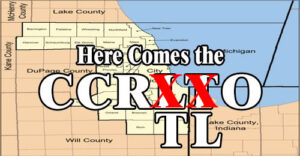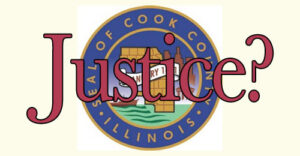 Section 42-806 – Tenant Remedies
Section 42-806 – Tenant Remedies
First, the ordinance became effective yesterday. I know – I’m behind in getting these posts out. Hang in there and we’ll get through it. Section 806 of the CCRTLO is entitled “Tenant Remedies”. This section has
 Section 42-806 – Tenant Remedies
Section 42-806 – Tenant Remedies
First, the ordinance became effective yesterday. I know – I’m behind in getting these posts out. Hang in there and we’ll get through it. Section 806 of the CCRTLO is entitled “Tenant Remedies”. This section has
 Are Suburban Landlords Ready?
Are Suburban Landlords Ready?Like it or not, it is June 1, 2021 and the Cook County Residential Tenant and Landlord Ordinance is now in full effect. Between the time the ordinance was passed and now, lawyers and politicians have discussed this ordinance in a number of forums. I wanted to provide a few quick thoughts on two issues I believe housing providers should consider as the ordinance dawns.
 Section 42-805 – Tenant Rights.
Section 42-805 – Tenant Rights.Section 805 of the CCRTLO is entitled “Tenant Rights”. In this section, we have a laundry list of tenant rights beginning with broad basic concepts and continuing on down to some detailed minutia. The opposite of rights are duties and these items definitely impose some obligations on landlords that will require them to adjust their leases and leasing practices.
 Section 804 – Rental Agreements
Section 804 – Rental AgreementsAfter a bit of a break to get landlords back in the game in the fight against rent control, it is finally time to get into the meat of the new Cook County Residential Tenant and Landlord Ordinance (CCRTLO). We’ll take a look at Section 42-804 which governs leases and rental agreements. Section 5-12-140 of the CRLTO has a nine point section governing rental agreements but the CCRTLO goes much further.
 Section 803 – Definitions
Section 803 – DefinitionsIn this installment of breaking down the Cook County Residential Tenant and Landlord Ordinance (CCRTLO), we will look at Section 42-803 which defines certain terms under the ordinance. Okay, I know this one is going to be boring (hence, I’m releasing it on a Friday night and you now have your weekend homework), but there is a silver lining. Some of these definitions (and the comparison and contrast to definitions in the Chicago Residential Landlord and Tenant Ordinance (CRLTO)) will foreshadow future differences we will highlight in the CCRTLO as we delve deeper into its requirements in future blog posts. Let’s begin.
 Section 802 – Exclusions
Section 802 – ExclusionsLike the Chicago Residential Landlord and Tenant Ordinance (CRLTO), the Cook County Residential Tenant and Landlord Ordinance (CCRTLO) has a number of exclusions even if the law applies in a particular municipality. Many of the CCTLRO exclusions
 Section 801 – Title, Purpose & Scope
Section 801 – Title, Purpose & ScopeLet’s start at the beginning. This will be the first post in a deep dive taking a look at the newly passed Cook County Residential Tenant and Landlord Ordinance (CCRTLO). As I make my run through the law, understand that I will not necessarily discuss each and every section, but will likely only point out interesting features and facets that might be of note. Cook County landlord should be well advised that there is NO SUBSTITUTE for reading and understanding this law, front to back, on your own. I’ll start with the first section.
 Lease Revisions Needed
Lease Revisions NeededA new day is dawning for suburban Cook County landlords. Just today, the Cook County Board of Commissioners unanimously passed the Cook County Residential Tenant and Landlord Ordinance. While this legislation could have been much worse based on the initial proposed ordinance, it still represents a major and substantial change for suburban landlords. Luckily, landlord advocates were able to successfully
 Does the Cook County Board Really Want a Level Playing Field?
Does the Cook County Board Really Want a Level Playing Field?UPDATE: The vote on this proposed ordinance is scheduled to take place December 15, 2020. Act now.
I have been training real estate agents, landlord groups, and real estate attorneys about Chicago Residential Landlord and Tenant Ordinance (CRLTO) compliance for over 10 years. During almost every one of my training sessions, there is a moment where one of the participants in the room get a wide-eyed look on their face as they come to realize that they have been violating the CRLTO on behalf of themselves or their clients. At that point, panic kicks in. Their hand shoots up. They ask the same question every time:
 Landlord Call to Action
Landlord Call to ActionSuburban landlords have been sleeping for decades. And who can blame them? Suburban renting is nothing like the complex procedure of Chicago (and Evanston) renting. Sure, suburban housing providers have heard of the Chicago Residential Landlord and Tenant Ordinance (CRLTO) for years. Most don’t really know (or want to know) what’s in it. What they do know is that it doesn’t apply to them. Unless suburban landlords take a major stand, that’s all going to change soon with the newly proposed